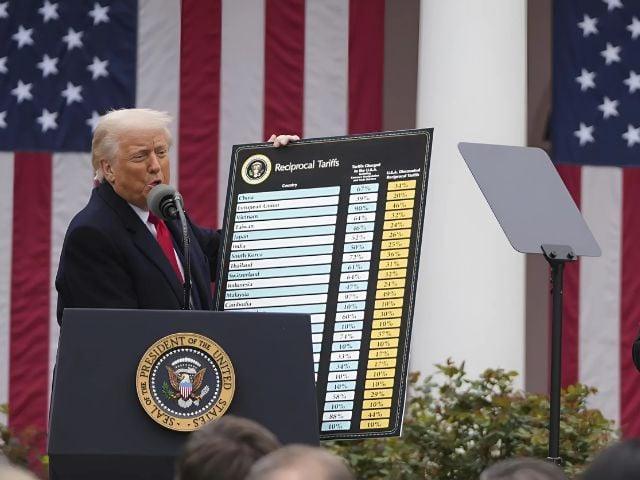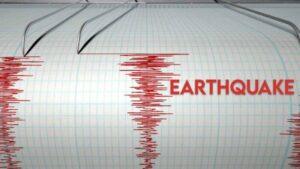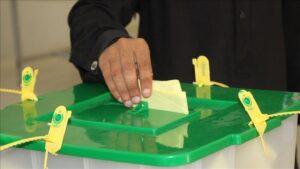The president of the United States, Donald Trump, announced on Wednesday the imposition of reciprocal tariffs in multiple countries, including a 29% rate on Pakistani goods.
Trump defended the decision, saying that it was necessary to correct the long -standing commercial imbalances and what he considered an unfair treatment of US products in foreign markets.
For a long time he has advocated the remodeling of international commercial agreements, claiming that high tariffs imposed by other countries have unfairly subsidized their economies at the expense of the United States.
Trump explained that Pakistan has been charging the United States a 58% tariff on US goods, which led the United States to impose a 29% rate on Pakistani products.
The United States remains one of Pakistan’s largest commercial partners, with a bilateral trade valued at $ 7.3 billion in 2024.
Trump criticized the practice of subsidizing foreign economies, stating that the United States had been helping other nations for a long time and urged countries to be more self -sufficient.
The United States has also imposed reciprocal tariffs on 40 other countries, with rates ranging from 10% to 50%, as part of a broader effort to address global commercial imbalances.
The new tariffs, announced by President Donald Trump, are aimed at countries that have been raising high tariffs on US goods, with the aim of guaranteeing fairer commercial conditions for US industries.
The specific tariff rates imposed are as follows:
China: 34%
European Union: 20%
Vietnam: 46%
Taiwan: 32%
Japan: 24%
India: 26%
South Korea: 25%
Thailand: 36%
Switzerland: 31%
Indonesia: 32%
Malaysia: 24%
Cambodia: 49%
United Kingdom: 10%
South Africa: 30%
Brazil: 10%
Bangladesh: 37%
Singapore: 10%
Israel: 17%
Philippines: 17%
Chile: 10%
Australia: 10%
Pakistan: 29%
Türkiye: 10%
Sri Lanka: 44%
Colombia: 10%
Peru: 10%
Nicaragua: 18%
Norway: 15%
Costa Rica: 10%
Jordan: 20%
Dominican Republic: 10%
United Arab Emirates: 10%
New Zealand: 10%
Argentina: 10%
Ecuador: 10%
Guatemala: 10%
Honduras: 10%
Madagascar: 47%
Myanmar (Burma): 44%
Tunisia: 28%
Kazakhstan: 27%
Serbia: 37%
Egypt: 10%
Saudi Arabia: 10%
El Salvador: 10%
Côte d’Effioire: 21%
Laos: 48%
Botswana: 37%
Trinidad and Tobago: 10%
Morocco: 10%
Algeria: 30%
Oman: 10%
Uruguay: 10%
Bahamas: 10%
Lesotho: 50%
Ukraine: 10%
Bahrain: 10%
Qatar: 10%
Mauricio: 40%
Fiji: 32%
Iceland: 10%
Kenya: 10%
Liechtenstein: 37%
Guyana: 38%
Haiti: 10%
Bosnia and Herzegovina: 35%
Nigeria: 14%
Namibia: 21%
Brunei: 24%
Bolivia: 10%
Panama: 10%
Venezuela: 15%
Macedonia del Norte: 33%
Ethiopia: 10%
Ghana: 10%
He concluded his speech reaffirming his position “America First”, describing commercial deficits as a “national emergency.” The new tariff rates vary from 10% to 49% for several countries, and the United States imposes rates that are usually approximately half of what other nations charge, although in some cases, the rates are identical.




